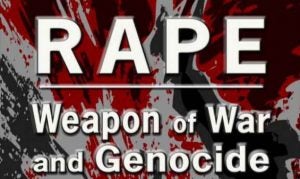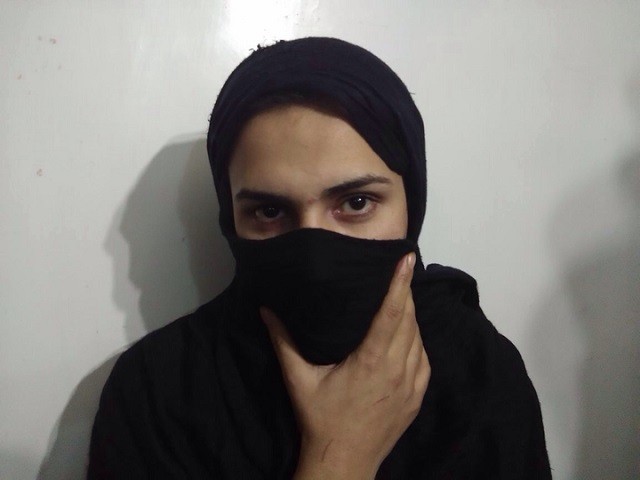By Kyli Lepine
Have you ever wondered exactly how realistic video games are? Warlike video games such as Call of Duty have become increasingly popular in modern society, typically with a rifle as the weapon of choice. The game is based on the events of World War II and includes a variety of explosions, enemy bases to overthrow and plenty of victims to destroy.
However, games like this neglect to highlight the true weapon of choice during war, systematic rape.
Sexual violence against women has been a vital weapon of war since the beginning of humanity with reported accounts during armed conflicts in Rwanda, Germany, Bosnia, Cambodia, Uganda, and Vietnam. The relationship between sexual violence and war is defined through Skjelsbæk’s Three Conceptualizations:

- Essentialism- any and all women are potential victims; This is used in order to establish a sense of militaristic masculinity.
- Structuralism- women are targeted based on membership to a specific ethnic, religious, or political group; This is used as form of “ethnic cleansing” to punish a specific group.
- Social Constructionism- both men and women are targeted. This is used to establish dominance and masculinity in the attacker and submission and femininity in the victim.
The true events of World War II resulted in over one million mothers, sisters, and daughters being gang raped in Germany alone. Some reports of up to 20 men in uniform at a time. The Soviet Red army participated in a form of Essentialism when they raped any and every woman no matter their age. The goal was to show militaristic power over Germany in every possible way.
The Rwandan Genocide is the clearest example of Structuralism in reference to wartime sexual violence. The Hutu militias are responsible for the systematic rape of hundreds of thousands of Tutsi women and girls. The targeted gang rapes were often preformed in public town squares so the girls would be humiliated, afterwards they would be mutilated by a machete or deliberately infected with HIV. The ultimate objective for the Hutu was the systematic ethnic cleansing of Tutsi minorities from the population of Rwanda.
A few consequences of wartime sexual violence can be death, disease, and mental subversion. If these women were not killed immediately after the attack, she was at risk of committing suicide or contracting a purposed disease (HIV, AIDS). Survivors of wartime rape typically experience higher levels of Post-traumatic stress and anxiety than non-sexual survivors of war.
The consequences did not stop with the survivor, they often extended to the child conceived as a result. Some women would commit infanticide or abandon the babies at birth. Malicious terms were created to describe these children, such as “War Child” or “Fruit of Hate”. They were isolated, discriminated against, and often disowned by family members.
Attention needs to be brought to the fact that systematic rape during war is a grievous act of inhumanity. This can be achieved by:
- Informing and Encouraging others to share their story and demand to be heard. Ignoring rape harms women by reinforcing the belief that “female” is synonymous with “victim”.
- Forcing informative sexual education on both girls and boys. Girls are often taught to avoid the dangers of men, all within the age old saying “Boys will be boys”. Girls are taught that we must accept the advances from men because “they don’t know any better” Ideas of hyper masculinity encourage aggressive behavior in men which endangers women under the promise of sexual rewards.
- Removing the stigma that sexual violence is a result of sending men to war. Wartime rape is not performed for the pleasure of the attacker, but to humiliate the victim under a vicious attack.
- Petitioning for United Nations to enforce militaristic reform on systematic rape as a tool of war.
To act against this injustice, considering supporting many of the organizations who are working to end the use of systematic rape on women during war, such as:
- Women Under Siege. https://www.womensmediacenter.com/women-under-siege
- I’m Worth Defending http://www.imworthdefending.org/
- V-Day https://www.vday.org/
- MADRE: Ending Rape as a Weapon of War https://www.madre.org/initiatives/ending-rape-weapon-war
These organizations provide firsthand opportunities to assist these women through emergency shelters, hotlines, and escape routes as well as initiatives towards the prevention of wartime rape. They enforce women’s voices in governmental institutions to ensure they are complying with their commitments to end systematic wartime rape.
Within the manifestation of the next war, may it in your backyard or across the globe, it is our responsibility to ensure that a woman’s body is no longer considered a continuation of the battlefield.
Kyli Lepine is senior at East Carolina University who will graduate in December 2020 with a double major in Anthropology and International Studies and a minor in Ethnic Studies. After graduation, Kyli hopes to pursue a career in international human rights or cultural diversity reform. In her spare time, Kyli enjoys playing with her dog, Azkaban.



